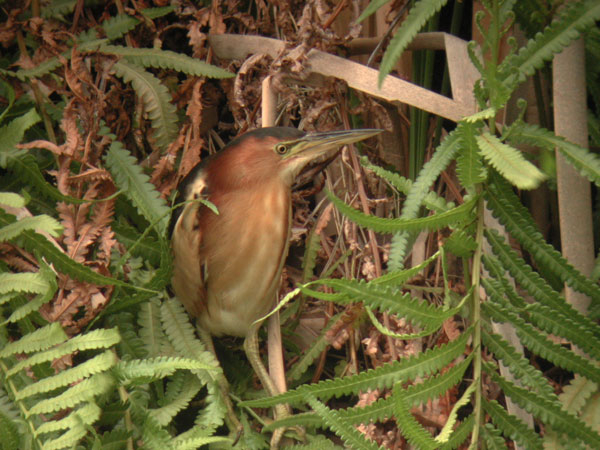Colours
Distinguishing features
This is a very small bittern and one of the smallest herons in the world. The adult male has largely black upperparts, including a black cap, while the underparts, as well as the neck, breast and the sides of the head, are rich chestnut. There are large buff patches on the shoulders, conspicuous in flight. The female is duller, brown and streaked on back and crown; immature birds are similar. The irides are yellow, the bill is yellow with a black culmen, and the feet and legs greenish-yellow. (Wikipedia)
Size
- From 25 cm to 36 cm (Length of specimen)
Wingspan
- Wingspan data is not yet available.
Synonyms
Distribution
Distribution and habitat preferences
It is found in Australia and southern New Guinea. Occasional vagrants make it to Lord Howe Island and New Zealand.
They are mainly found in freshwater wetlands, where they inhabit dense emergent vegetation of reeds and sedges, and inundated shrub thickets. They are also occasionally found in brackish and saline wetlands such as mangrove swamps, Juncus-dominated salt marsh and the wooded margins of coastal lagoons. (Wikipedia)
Behaviour
Black-backed Bitterns are solitary, secretive and seldom seen, mainly active at dusk or at night. They are skulkers of reedbeds, walking in a crouched posture with head extended forward, crossing patches of open ground rapidly, stalking their prey at the water’s edge. When alarmed they will assume the cryptic posture typical of many bitterns, standing still with the head and bill extended vertically upwards. Usually reluctant to fly, when flushed they will do so with retracted head and dangling legs, skimming low over the water and the wetland vegetation. (Wikipedia)
Diet
They feed mainly on aquatic invertebrates such as crustaceans and dragonfly larvae, sometimes small vertebrates such as fish and frogs. They hunt by waiting for potential prey animals to come within range of their bills, or by active stalking. (Wikipedia)



